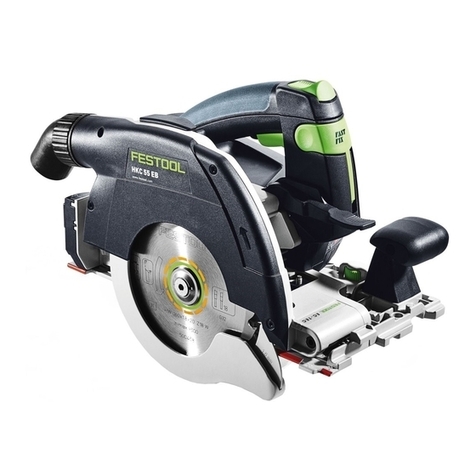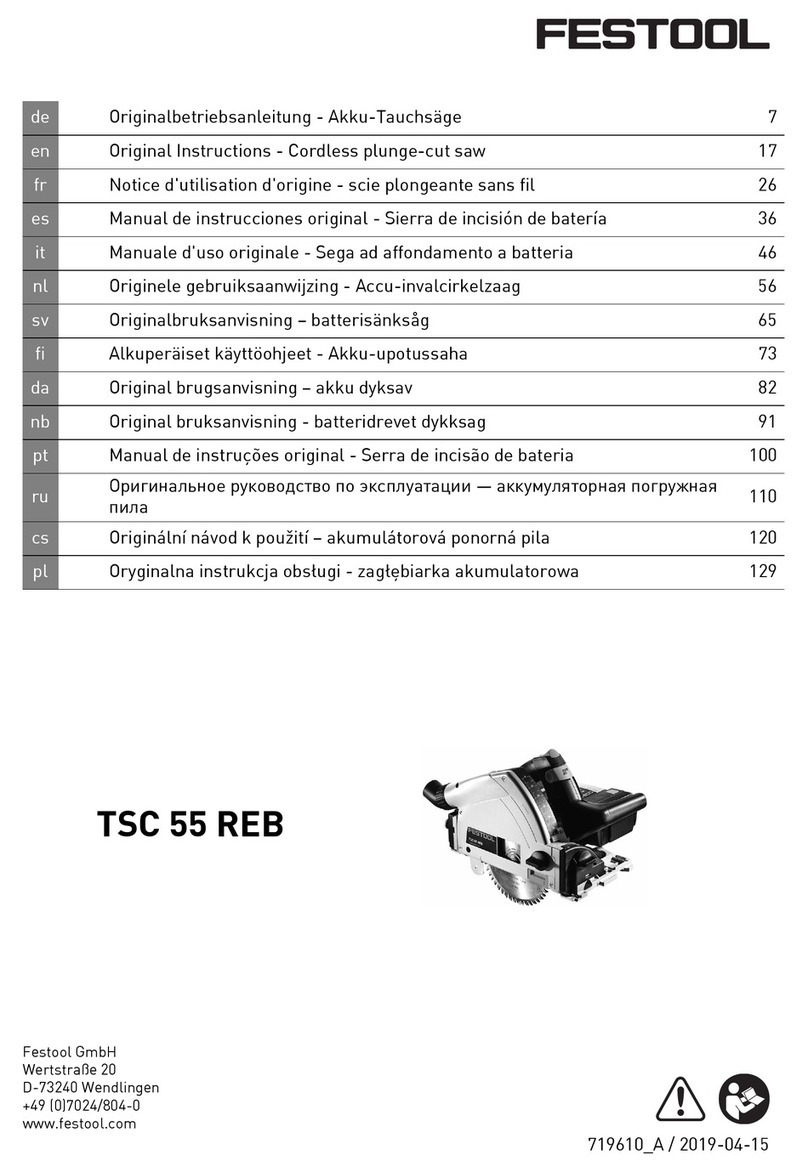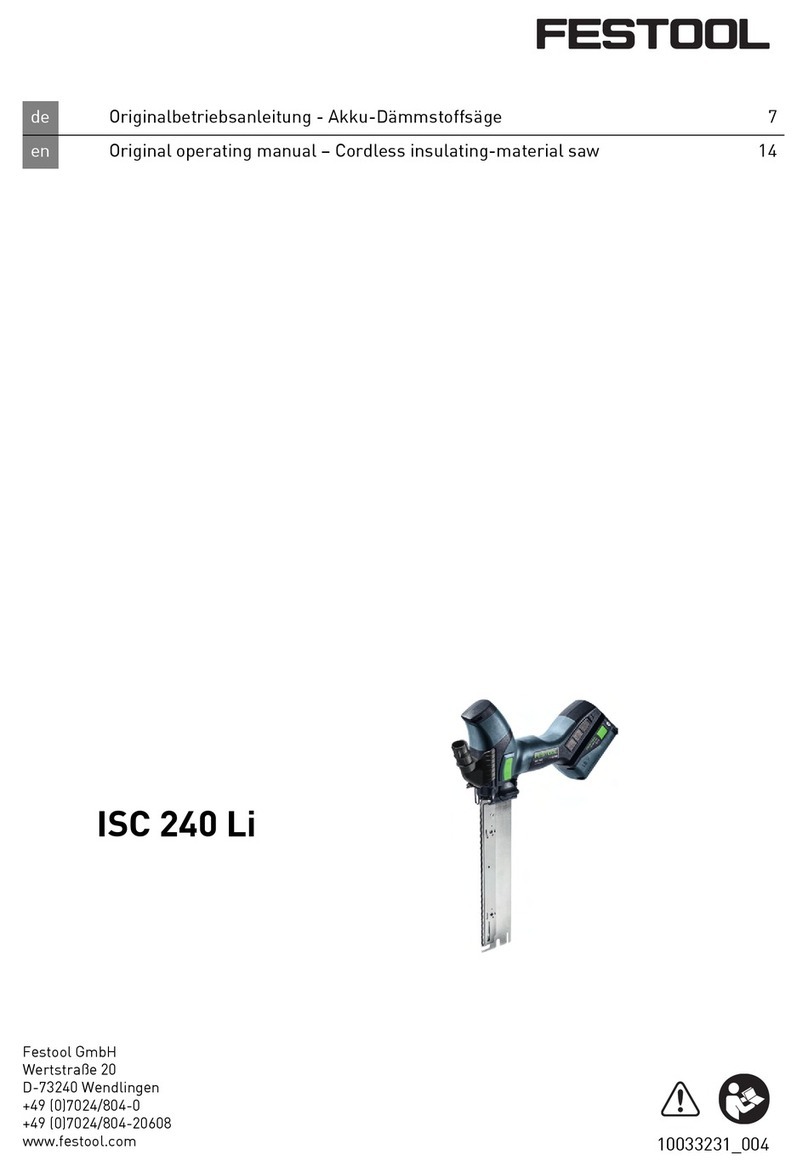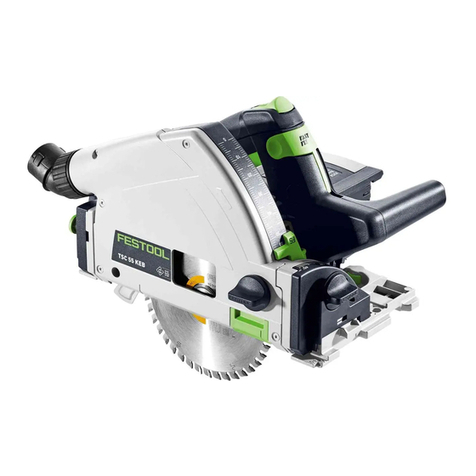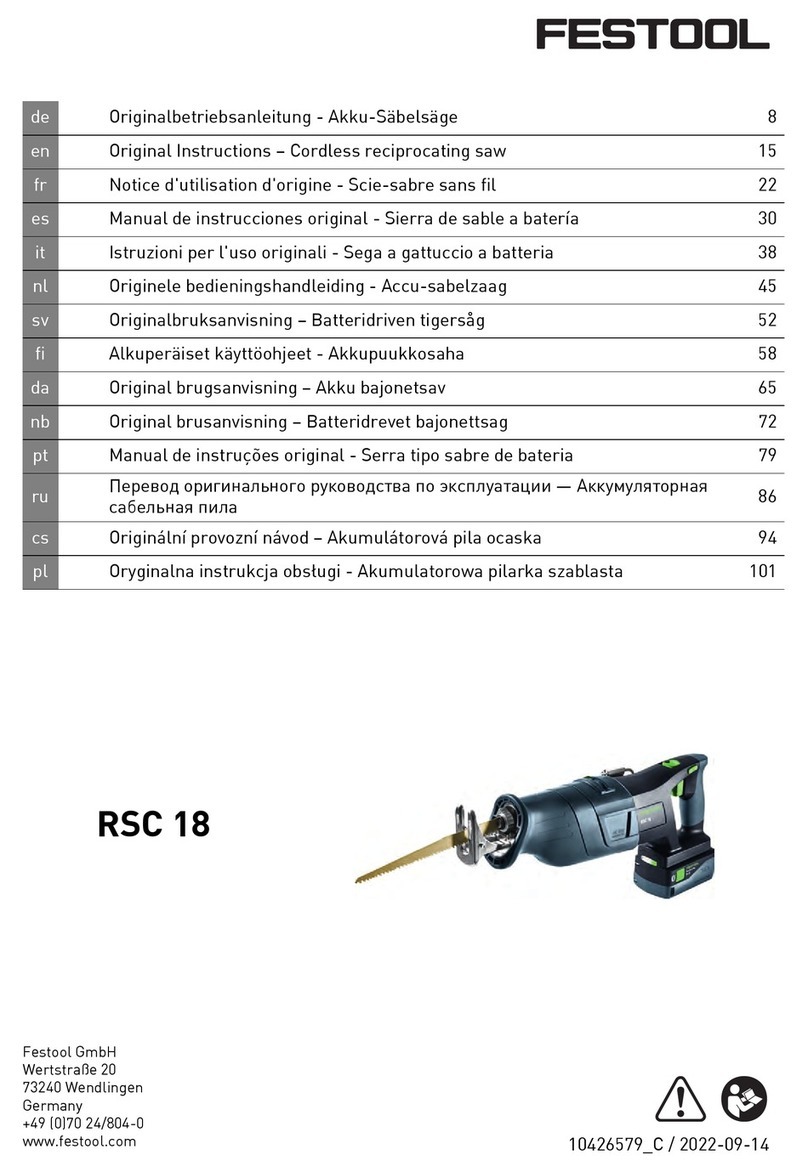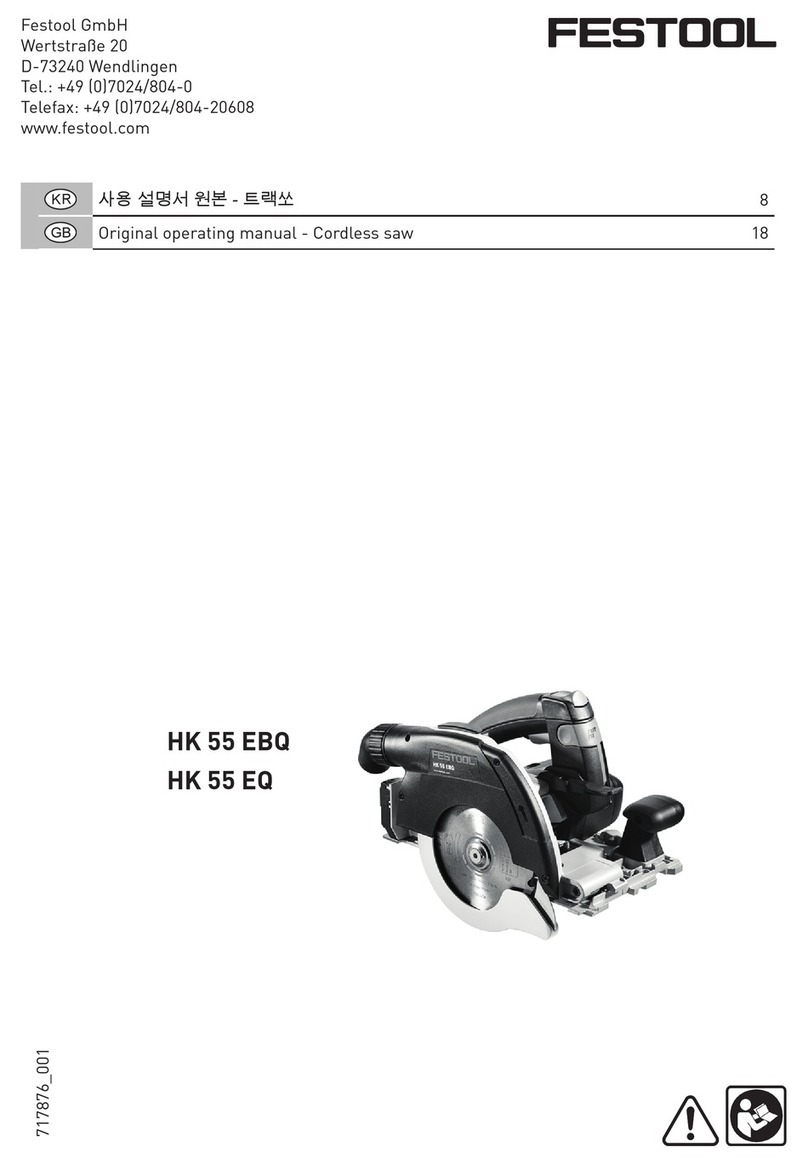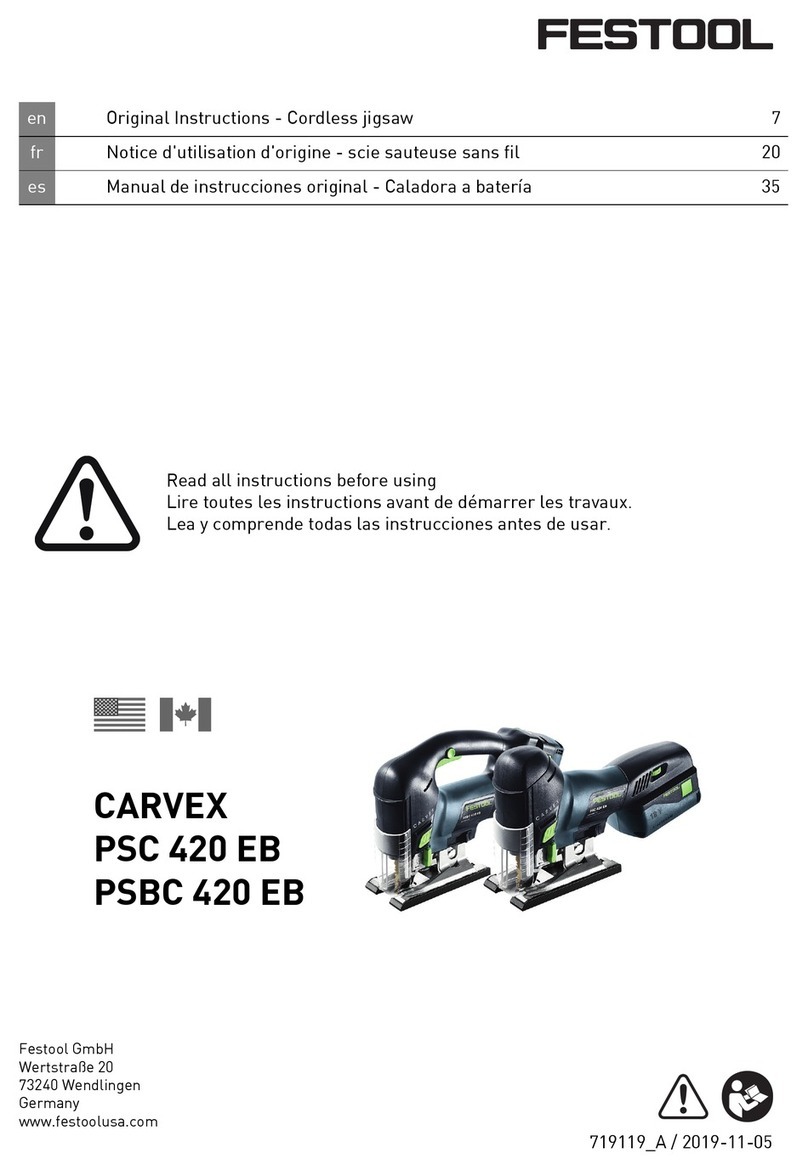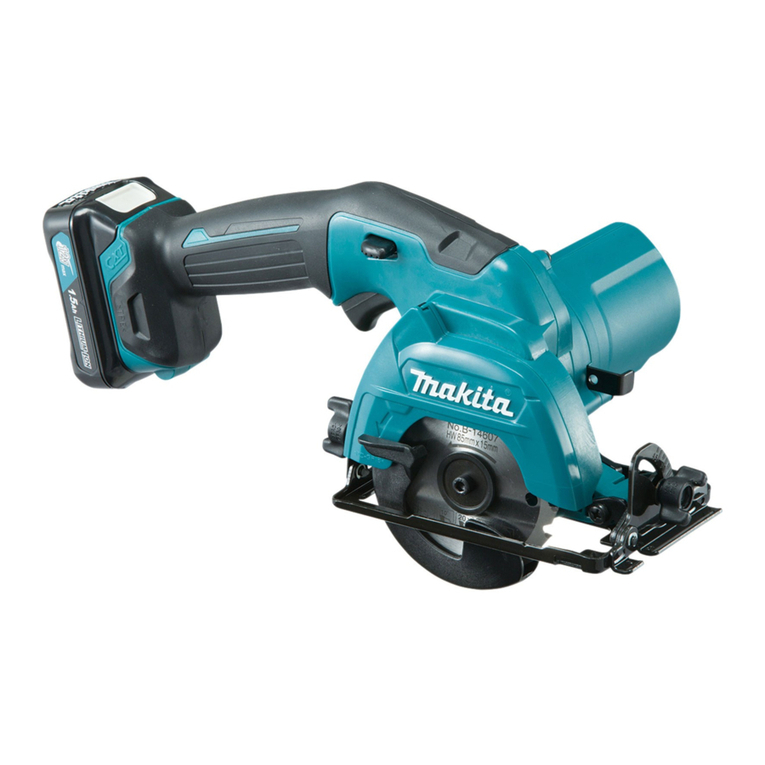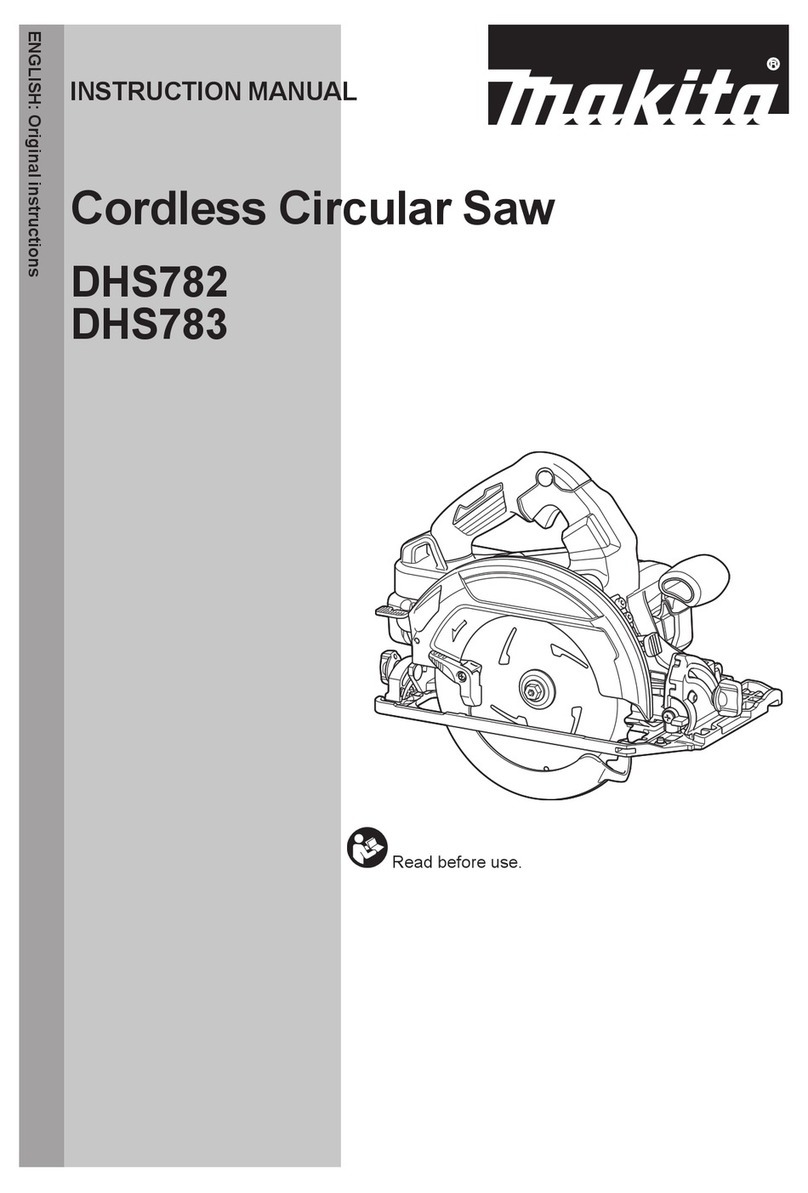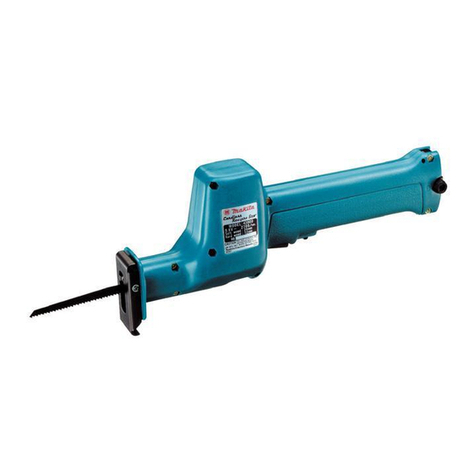
–Never hold the workpiece in your hands or
across your leg while cutting. Secure the
workpiece to a stable platform. It is impor
tant to support the work properly to mini
mise body exposure, blade binding, or loss
of control.
–Hold the power tool by insulated gripping
surfaces, when performing an operation
where the cutting tool may contact hidden
wiring .Contact with a "live" wire will also
make exposed metal parts of the power
tool "live" and could give the operator an
electric shock.
–When ripping, always use a rip fence or
straight edge guide. This improves the ac
curacy of cut and reduces the chance of
blade binding.
–Always use blades with correct size and
shape (diamond versus round) of arbour
holes. Blades that do not match the mount
ing hardware of the saw will run off-centre,
causing loss of control.
–Never use damaged or incorrect blade
washers or bolt. The blade washers and
bolt were specially designed for your saw,
for optimum performance and safety of op
eration.
Causes of kickbacks and corresponding safety
instructions
– kickback is a sudden reaction to a pinched,
jammed or misaligned saw blade, causing
an uncontrolled saw to lift up and out of the
workpiece toward the operator;
– when the blade is pinched or jammed tight
ly by the kerf closing down, the blade stalls
and the motor reaction drives the unit rap
idly back toward the operator;
– if the blade becomes twisted or misaligned
in the cut, the teeth at the back edge of the
blade can dig into the top surface of the
wood causing the blade to climb out of the
kerf and jump back toward the operator.
Kickback is the result of saw misuse and/or in
correct operating procedures or conditions and
can be avoided by taking proper precautions as
given below.
–Maintain a firm grip with both hands on
the saw and position your arms to resist
kickback forces. Position your body to ei
ther side of the blade, but not in line with
the blade. Kickback could cause the saw to
jump backwards, but kickback forces can
be controlled by the operator, if proper pre
cautions are taken.
–When blade is binding, or when interrupt
ing a cut for any reason, release the trig
ger and hold the saw motionless in the
material until the blade comes to a com
plete stop. Never attempt to remove the
saw from the work or pull the saw back
ward while the blade is in motion or kick
back may occur. Investigate and take cor
rective actions to eliminate the cause of
blade binding.
–When restarting a saw in the workpiece,
centre the saw blade in the kerf so that
the saw teeth are not engaged into the
material. If a saw blade binds, it may walk
up or kickback from the workpiece as the
saw is restarted.
–Support large panels to minimise the risk
of blade pinching and kickback. Large pan
els tend to sag under their own weight.
Supports must be placed under the panel
on both sides, near the line of cut and near
the edge of the panel.
–Do not use dull or damaged blades. Un
sharpened or improperly set blades pro
duce narrow kerf causing excessive fric
tion, blade binding and kickback.
–Blade depth and bevel adjusting locking
levers must be tight and secure before
making the cut. If blade adjustment shifts
while cutting, it may cause binding and
kickback.
–Use extra caution when sawing into exist
ing walls or other blind areas. The pro
truding blade may cut objects that can
cause kickback.
Lower guard function
–Check the lower guard for proper closing
before each use. Do not operate the saw if
the lower guard does not move freely and
close instantly. Never clamp or tie the
lower guard into the open position. If the
saw is accidentally dropped, the lower
guard may be bent. Raise the lower guard
with the retracting handle and make sure it
moves freely and does not touch the blade
or any other part, in all angles and depths
of cut.
–Check the operation of the lower guard
spring. If the guard and the spring are not
operating properly, they must be serviced
before use. Lower guard may operate slug
gishly due to damaged parts, gummy de
posits, or a build-up of debris.
English
20
